Imagine a world where healthcare payments flow as seamlessly as a river, yet in reality, many find themselves navigating through a swamp of inefficiencies. This disconnect primarily stems from EHR and medical billing systems operating in silos, rather like two islands whispering across the sea but never truly connecting.
As we explore EHR in medical billing, let’s envision bridging these islands, transforming the swamp into fertile land where efficiency, accuracy, and satisfaction bloom. Welcome to a journey towards seamless integration, where every step forward is a stride toward revolutionizing healthcare payments.
Top Takeaways:
- Streamlining Operations Is Just the Beginning: When we dive into integrating EHR systems within medical billing processes, the immediate benefit that jumps out is the significant reduction in paperwork. This isn’t just about cutting down on physical forms but transforming the entire billing cycle. By automating tasks that were once manual, EHR systems save time and minimize errors that can lead to claim denials or delays. According to a study found on NCBI, the implementation process of EHR systems is crucial for achieving these efficiencies. It’s not merely about adopting an EHR billing system; it’s about how you implement it to harness its full potential in medical billing.
- Enhanced Accuracy and Interoperability Matter: The conversation around EHR in medical billing often focuses on how these systems simplify data entry and tracking. However, a more profound impact lies in their ability to improve coding accuracy and enhance interoperability between different healthcare systems. EHR implementation leads to better interoperability, facilitating seamless communication across healthcare providers and billing services. This ensures that billing codes are accurate from the get-go and that patient data can be easily shared and accessed, leading to more coordinated care and streamlined payment processing.
Table of Contents:
- Understanding EHR in Medical Billing
- Key Features of EHR in Medical Billing Processes
- Benefits of Using EHR in Medical Billing Practices
- Challenges of Integration of EHR Systems and Medical Billing Software
- Best Practices for Integrating EHRs with Medical Billing Systems
- Innovative Approaches to EHR and Medical Billing
- How Topflight Can Help
Understanding EHR in Medical Billing
At the heart of modern healthcare operations lies the Electronic Health Record (EHR), a digital transformation champion that has reshaped medical billing processes. But how exactly do you define an EHR? Simply put, it’s a comprehensive, digital version of a patient’s paper chart, encompassing a wide array of data, including:
- medical history
- diagnoses
- medications
- treatment plans
- immunization dates
- allergies
- radiology images
- laboratory test results
Beyond just clinical data, EHR systems also serve as centralized platforms for secure document storage, enabling healthcare providers to replace outdated paper records with easily accessible, structured health data. This shift not only improves access but also enhances transparency and protection of sensitive PHI (protected health information).
Why EHR is crucial in medical billing
EHRs are more than just digital records—they’re the engine that drives streamlined medical billing by organizing patient information like demographics, medical history, diagnoses, and treatments in one accessible system. By tightly aligning clinical data with coding and billing workflows, EHRs ensure accuracy from the first encounter to final reimbursement.
When we talk about EHR for medical billing, we’re referring to the seamless integration of this vast repository of patient data with the financial transactions and billing systems within healthcare organizations. This integration serves as a critical foundation for efficient and accurate billing processes and for enhancing overall operational efficiency.
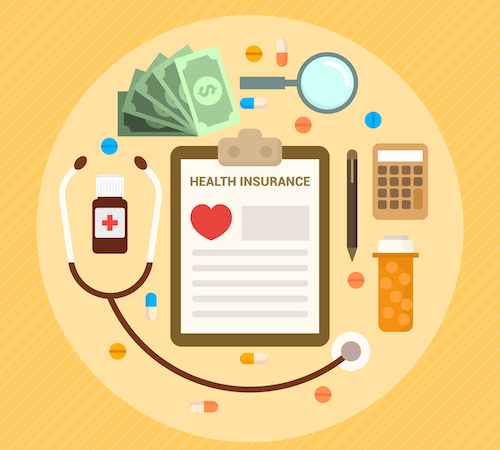
By bridging the gap between clinical care and financial management, EHRs ensure that every billable service is accurately captured, coded, and charged. This minimizes errors, reduces administrative burdens, and ultimately leads to faster reimbursements. In essence, EHR in medical billing is the linchpin for a financially healthy and patient-centric healthcare system.
With better management of medical information and more transparent workflows, financial departments can work more efficiently, leading to fewer unpaid claims and a more reliable revenue stream.
That’s why EHRs play a pivotal role—not only in clinical care, but also in ensuring billing teams can confidently process claims using precise patient information, from demographics to diagnoses to treatment plans.
Related: How to Develop an EMR System
Key Features of EHR in Medical Billing Processes
In the tightly regulated world of healthcare delivery and revenue management, medical billing EHR systems play a pivotal role in connecting clinical workflows with financial operations. But what features make these systems essential to modern healthcare organizations?
Let’s break down the capabilities that transform medical billing EMR systems from static data repositories into intelligent engines for financial accuracy and operational efficiency.
Automation at Its Finest
Say goodbye to the days of manual data entry. Medical billing EHR platforms automate clinical documentation and claims processing, drastically reducing errors and saving invaluable time. This helps avoid time-consuming tasks that often lead to human errors and costly mistakes.
Claims Scrubbing
With built-in functionality, these systems audit and correct coding errors pre-submission, significantly lowering the rate of claim denials. Advanced systems support ICD-10, CPT, and HCPCS code sets, enabling consistent, standardized claim creation and better medical claim outcomes.
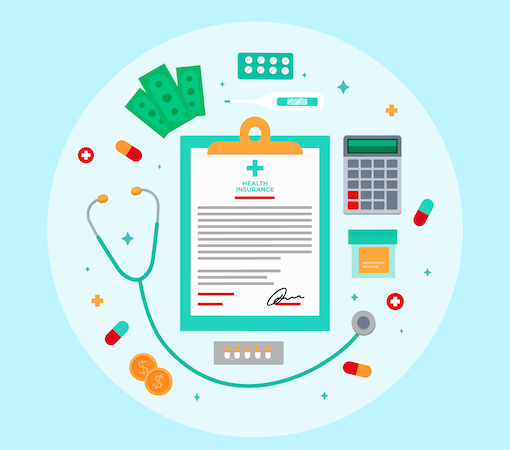
Seamless Insurance Verification
Real-time eligibility checks are no longer a dream. These systems ensure services are covered, streamlining the billing cycle and enhancing patient satisfaction. Verifying insurance eligibility upfront prevents delays in claim management and reduces the risk of services going unpaid.
Integrated Coding and Documentation
Medical billing EHRs ensure accuracy, compliance, and efficiency by synchronizing with up-to-date coding databases and providing intuitive documentation templates.
Comprehensive Revenue Cycle Management
From claim submission to final payment, these systems offer a panoramic view of the financial health of your practice, enabling informed decision-making and improved revenue generation.
Read more on healthcare payment system integration
By harnessing these features, healthcare organizations can easily navigate the complexities of medical billing, turning potential financial pitfalls into pathways for growth and efficiency.
Related: How to Integrate a Health App with Epic EHR/EMR
Benefits of Using EHR in Medical Billing Practices
In the ever-evolving landscape of healthcare, integrating EMR and EHR in medical billing has proven to be a game-changer. Here’s why this integration is so transformative:
Streamlined Operations
Fusing EMR and EHR systems with medical billing practices eradicates cumbersome paperwork and manual entry, propelling healthcare facilities into an era of enhanced efficiency and precision. This streamlined approach accelerates payment processing and ensures accuracy from diagnosis to reimbursement. Routine tasks such as appointment scheduling and prescription tracking are also centralized, reducing administrative friction for both doctors and medical staff.
Cost Reduction
EHR/EMR in medical billing significantly reduces operational costs by minimizing administrative tasks and errors. These savings can then be redirected to improve patient care or expand healthcare services.
Improved Patient Experience
Instant access to a patient’s comprehensive medical history allows for more informed decision-making and personalized care plans. This level of attentiveness enhances patient satisfaction and fosters a more trusting patient-provider relationship. Having easy access to documented symptoms, conditions, and prior treatments ensures more precise interventions and reduces the chance of redundant tests or misdiagnoses.

Enhanced Revenue Cycle Management
Accurate documentation and coding, facilitated by EMR and EHR integration, optimize claim submissions. This reduces denials and delays, ensuring a smoother revenue cycle and improving cash flow.
Discover how medical coding automation can significantly reduce errors and improve efficiency in your revenue cycle management.
Compliance and Security
With stringent regulations surrounding patient data, EMR and EHR systems offer robust security features and ensure compliance with healthcare laws, safeguarding both patient information and the healthcare provider’s reputation.
In essence, the integration of EHR and EMR in medical billing is pivotal for modernizing healthcare practices, enhancing operational efficiency, and delivering superior patient care.
Related: Guide to Medical Billing Automation
Challenges of Integration of EHR Systems and Medical Billing Software
In the realm of healthcare, where the EHR full form in medical billing signifies a bridge between clinical care and financial management, integrating EHR systems with medical billing software presents a unique set of challenges. These hurdles can often seem daunting, yet understanding them is the first step toward overcoming them.
Compatibility Issues
The cornerstone of integration frustration often lies in the inherent compatibility issues between EHR systems and medical billing software. With each system potentially using different data formats and coding standards, the task of marrying these two crucial components can feel like fitting square pegs into round holes. This lack of standardized protocols leads to errors and data inconsistencies, complicating the billing process.
Read more on medical billing software development
Data Synchronization
Imagine a scenario where patient data isn’t updated in real-time across systems. This gap can result in billing inaccuracies, delayed payments, and ultimately, a financial bottleneck for healthcare providers. Ensuring that patient information seamlessly syncs between EHR and medical billing programs is paramount for operational efficiency.
These gaps are especially critical in hospitals, where even minor human errors can lead to large-scale administrative issues or missed reimbursements.
Security and Privacy Concerns
In an era where data breaches are not uncommon, integrating these systems raises significant security and privacy concerns. Safeguarding patient health information while complying with stringent regulations such as HIPAA becomes a critical challenge, requiring robust security measures to protect sensitive data.
Related: HIPAA-Compliant App Development Guide

Training and Adoption
Another hurdle is the resistance to change. Healthcare professionals, accustomed to their routines, may find adapting to a new integrated system challenging. Providing comprehensive training and support for staff is essential to facilitate smooth adoption and optimize the benefits of integration.
Financial departments often struggle to recalibrate established workflows and reconcile new data streams with existing reporting systems.
Cost Implications
Lastly, the financial aspect cannot be ignored. The initial investment required for integration, including customization, training, and ongoing maintenance, can be substantial. However, it’s essential to weigh these costs against the long-term benefits of streamlined billing processes and improved revenue cycle management.
Understanding these challenges is crucial for healthcare organizations aiming to leverage the full potential of EHR in medical billing, setting the stage for innovative solutions and best practices that pave the way for successful integration.
Related: Cost of EHR Implementation
Best Practices for Integrating EHRs with Medical Billing Systems
In the landscape of healthcare technology, understanding the EHR meaning in medical billing is pivotal. It stands not just as a digital version of a patient’s paper chart but as a crucial component in streamlining invoicing operations and improving financial outcomes.
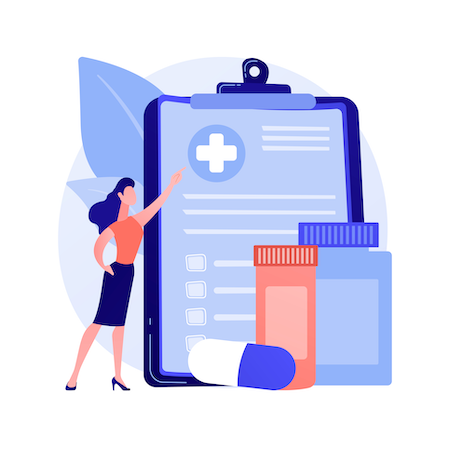
To harness the full potential of EHRs in medical billing, here are some distilled best practices drawn from our extensive experience:
Choose Compatible Systems
Opt for EHR and medical billing software designed to work together, ensuring seamless data exchange and compatibility. This foundational step is critical for simplifying the integration process.
Establish Clear Communication
Foster a culture of collaboration between the EHR and medical billing teams. Regular updates, issue resolutions, and shared insights are essential for a smooth transition and ongoing operation.
Check out our guide on choosing an EHR.
Data Accuracy and Consistency
Implement data validation processes to catch and correct any discrepancies in patient information, charge codes, and insurance details, ensuring the integrity of your billing process.
Continuous Training and Support
Comprehensive training sessions and continuous support mechanisms are vital. They ensure that all users are proficient with the integrated system and can adapt to updates or changes efficiently.
Regular Monitoring and Testing
Keep a vigilant eye on the integration’s performance. Regular testing helps identify and rectify issues early, maintaining the accuracy and efficiency of data transfer between systems.
Implement Robust Security Measures
Given the sensitivity of patient data, employing stringent security protocols is non-negotiable. Encryption and access controls are just the starting point for protecting information during and after the integration process. This becomes especially important when handling medical information related to chronic diseases and long-term treatment histories.
Remember, the goal isn’t just a working system—it’s a convenient, profitable integration that reduces friction, improves billing speed, and boosts trust across departments.
By adhering to these best practices, healthcare organizations can navigate the complexities of integrating EHRs with medical billing systems. The goal is clear: to achieve a synergy that enhances operational efficiency, improves financial health, and elevates patient care.
Related: EHR Interoperability Breakdown
Innovative Approaches to EHR and Medical Billing
In the quest for efficiency and effectiveness, the intersection of electronic health records and medical billing offers a fertile ground for innovation.
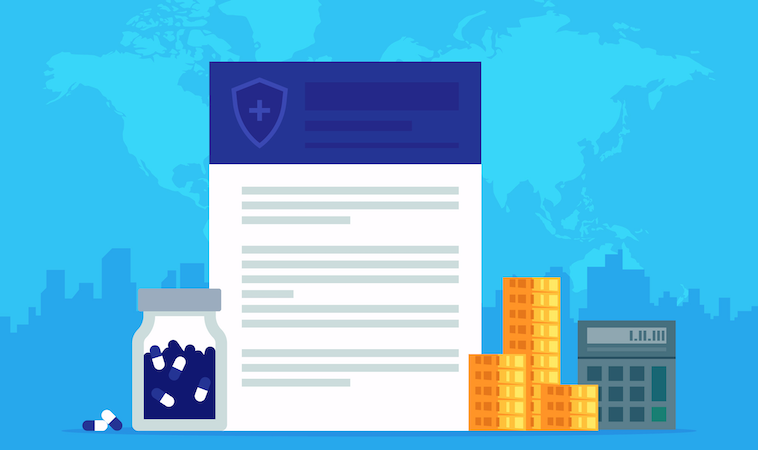
As healthcare continues to evolve, leveraging cutting-edge technologies like AI, cloud computing, and low-code/no-code platforms can significantly enhance both patient care and the bottom line. Let’s explore how these technologies are reshaping the future of healthcare IT.
AI and Machine Learning
Artificial Intelligence (AI), including large language models like ChatGPT, is revolutionizing the way electronic health records are managed and utilized for medical billing. AI can automate routine tasks such as data entry, coding, and even preliminary diagnostics, reducing errors and freeing up valuable time for healthcare providers. Furthermore, predictive analytics can identify trends and flag potential issues before they become problematic, ensuring smoother financial procedures and improved patient outcomes.
Cloud Computing
The flexibility of cloud computing allows for quick scaling up or down based on demand, without the need for significant upfront investment in hardware. This scalability ensures that healthcare organizations can manage patient data efficiently, especially during peak times, while also maintaining cost-effectiveness. Moreover, cloud-based EHR systems facilitate seamless access to patient records from multiple locations, enhancing collaboration among healthcare professionals and ensuring continuity of care.
Low-Code/No-Code Platforms
The adoption of low-code/no-code platforms in the development of EHR and medical billing systems empowers users to create and customize solutions without extensive programming knowledge. This democratization of development accelerates the deployment of tailored solutions that meet specific community needs, improving patient engagement and satisfaction. Additionally, these platforms can facilitate quicker updates and adaptations to regulatory changes, ensuring compliance and reducing administrative burdens.
Internet of Medical Things (IoMT)
The Internet of Medical Things (IoMT) is a connected infrastructure of medical devices, software applications, and health systems and services. The integration of IoMT with EHR and medical billing systems streamlines workflows, reduces redundancies, and ensures that billing is accurate and up-to-date.
These innovative approaches not only streamline EHR billing processes but also pave the way for more personalized and efficient healthcare delivery. By embracing AI, cloud computing, and low-code/no-code platforms, healthcare organizations can overcome traditional challenges and set new standards for excellence in patient care and financial management.
Related: How to Develop a Hospital Management System
How Topflight Can Help
In the rapidly evolving world of healthcare technology, having a trusted partner to navigate the complexities of integrating EHR and billing systems is invaluable. Topflight stands at the forefront of this revolution, equipped with the expertise and experience to transform your vision into reality. Here’s how we can elevate your project:
- Expertise in Healthcare Technology: Deep understanding of EHR systems and medical billing nuances.
- Custom Solutions: Tailored development to meet your unique clinical and billing needs.
- Agile Development: Quick iterations to adapt to changing healthcare landscapes.
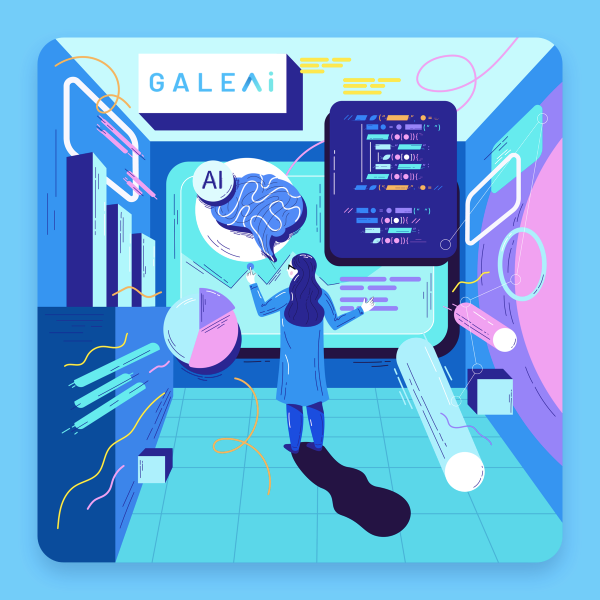
Drawing on our successful collaboration with GaleAI, we’ve demonstrated our capacity to enhance medical coding efficiency through AI integration, resulting in significant revenue recovery for providers. During the course of the project, we integrated the AI engine for medical coding with major EHRs, such as EPIC and Athena. As a result, GaleAI helps providers:
- uplift revenue by 15%
- analyze thousands of notes in seconds
- spend 90% less time on coding
This case study exemplifies our commitment to delivering cutting-edge solutions that seamlessly merge EHR and billing processes, ensuring your project not only meets but exceeds expectations.
Also Read: A Guide to EHR Data Migration
After all, full interoperability and automated claim processing are what EHRs stand for in medical billing. So, let’s make that a reality in your clinic. Let Topflight be your guide in the intricate journey of healthcare digital transformation.
Check out our EHR integration services
Frequently Asked Questions
What is EHR in medical billing?
EHR in medical billing refers to the use of electronic health records to support billing, coding, and reimbursement workflows. By storing patient information like demographics, diagnoses, and treatments in a digital format, EHR systems help ensure billing accuracy, reduce administrative errors, and streamline the entire revenue cycle.
What makes the medical billing and coding process so difficult?
The complexity arises from the need to accurately translate medical records into standardized codes that insurance companies use to process claims. This process involves a deep understanding of medical terminology, regulations, and payer-specific guidelines.
How can integrated EHR help with medical billing and coding?
Integrated EHR systems streamline the billing and coding process by automating the translation of clinical documentation into accurate charge codes. This not only reduces manual errors but also speeds up the claim submission process.
How can EHR be integrated into medical payment solutions?
EHR integration into medical payment solutions involves leveraging APIs (Application Programming Interfaces) to connect EHR systems with billing programs, ensuring seamless data flow and real-time access to patient information for more efficient payment processing. In the context of optimizing healthcare operations, EHR for medical billing stands out as a critical solution. It not only simplifies the billing and coding process but also enhances the overall financial management of healthcare services.
Which is better: EHR or EMR?
There’s no difference whatsoever. Both terms are used interchangeably; it’s just some healthcare organizations choose to market their product as EHR (electronic health records) and others as EMR (electronic medical records).
